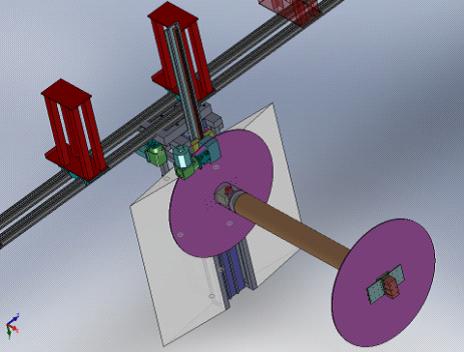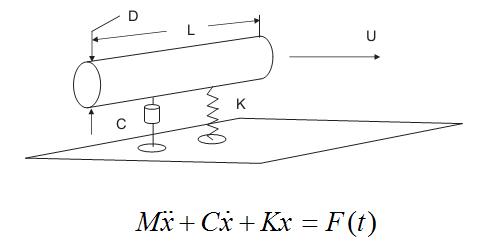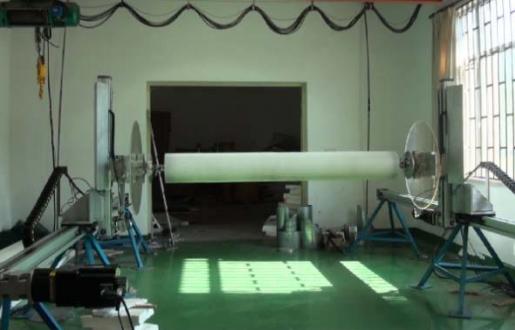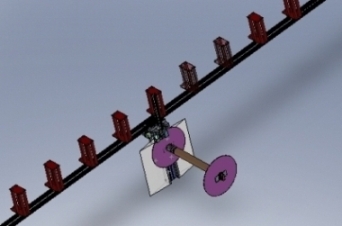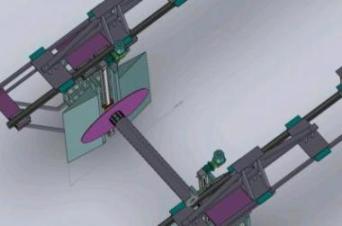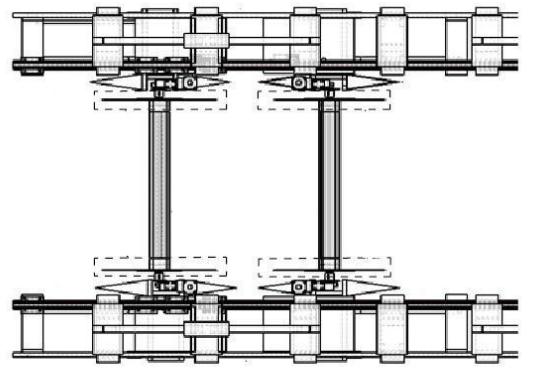|
|||||
Here is the basic equation of a vibrating system:
The "M" is the mass properity of the structure, and the "C" and "K" represent the damping and stiffness of the structure. Difference of the above properities (caused by different material, constraint, etc)can cause totally different response of the structure. What if we combine the computer on-line simulation of M, C, K and the real laboratory apparatus using force feedback technology, and, therefore, we can provide a variety of the experimental conditions. Such ingenious and extremely versatile experimental apparatus was first developed by Dr. F. S. Hover and Dr. M. S. Triantafyllou, et al. in MIT. We now try to develop such VIV experimental apparatus and achieve higher Reynolds numbers approaching super-critical area. This is now my capstone project, which is supervised by Prof. Fu Shixiao, Shanghai JIao Tong University. 1. Former Experimental WorksOn the basis of our Forced Oscillations Experimental Apparatus for VIV research (Fig.1) developed in Shanghai Jiao Tong University State-Key Laboratory of Ocean Engineering, we are now in the middle of design and construction of the new apparatus using force feedback technology. The serial experiment will be conducted in the towing tank in Shanghai Jiao Tong University (110 m long, 6 m wide and 3 m deep).
Fig. 1 The front view of our experimental apparatus (the diameter is 300 mm and the length is 2024 mm.) 2. VIV Experimental Apparatus Using Force Feedback Technology
The goal of our current research (compared to the previous studies) focuses on the following aspects: 2.1 High Reynolds Number When Reynolds Number increases to critical and super-critical Reynolds Number, the system displays some unique characters, compared to the system at low Reynolds Number. The drag coefficient decreases dramatically in the critical area and the wake width decreases accordingly; the in-line vibration character will have a more significant effect at high Reynolds Number; in free oscillations at large Reynolds Number in many experiment, the oscillation tracks are no longer sinusoidal, etc. In our apparatus, we seek to achieve high Reynolds Number experiment and explore the above characters. (1.The designed diameter of the cylinder is 250 mm; 2.The designed velocity of the experiment is 2m/s; 3.The Reynolds Number in the experiment is expected to be 4.98e5. ) 2.2 X-Y Motion The previous studies have been mainly focused on the problem of cylinder's cross-flow vibration, and few address the question of the in-line vibration. We are interested in the question: What will the vibration of in-line direction will affect the whole system, especially when system undergoes low mass ratio and high Reynolds number (usually faced in the field of ocean engineering) So compared to the single degree-of-freedom experimental apparatus developed at MIT (Hover, Triantafyllou et al.), we intend to expand the experimental system to both X and Y motions. 2.3 Multi-Functions Further, instead of restricting our system only to single rigid cylinder oscillating in the current, we wish, in the future, to expand our apparatus achieving multi-tasks and conducting other novel studies. As examples:
|
